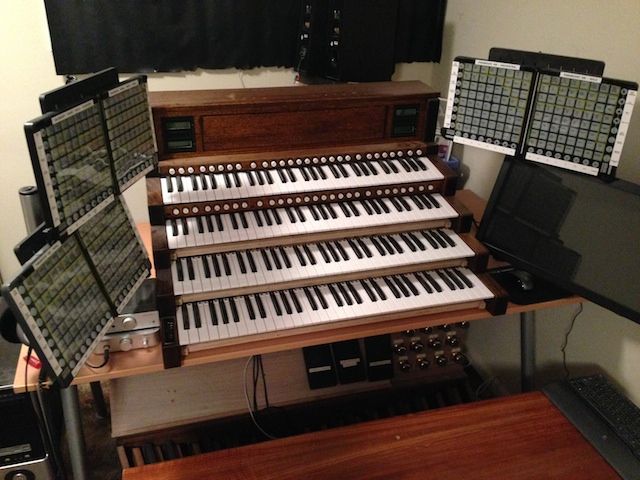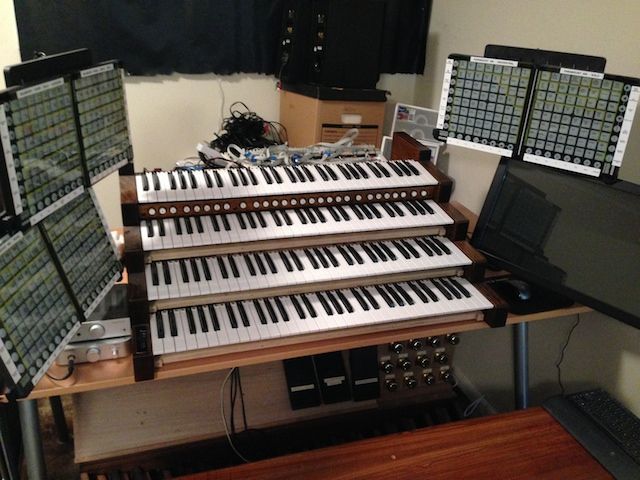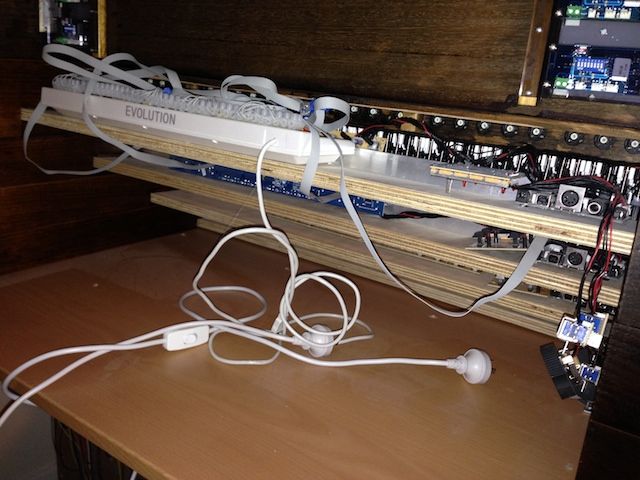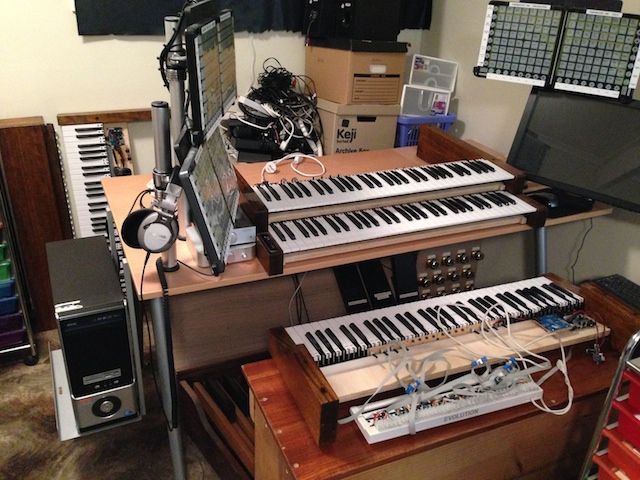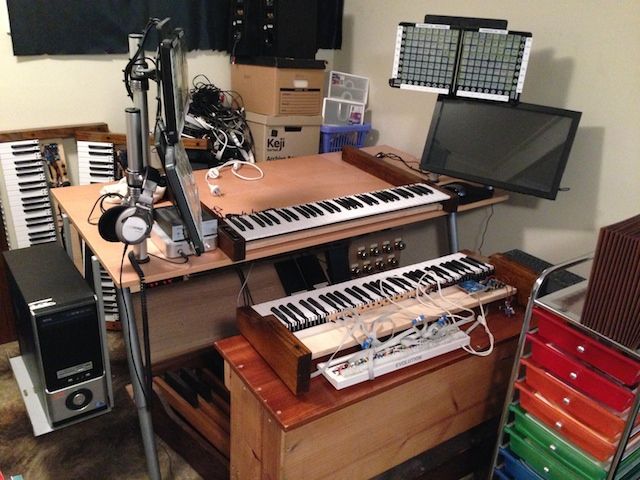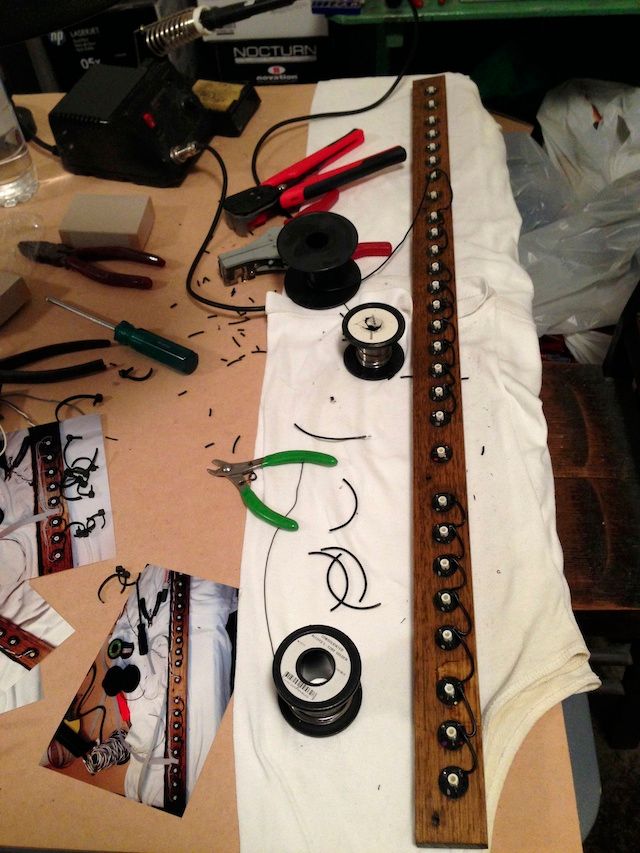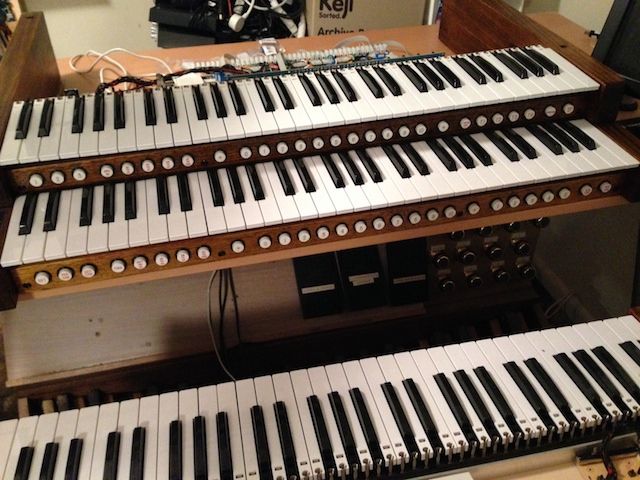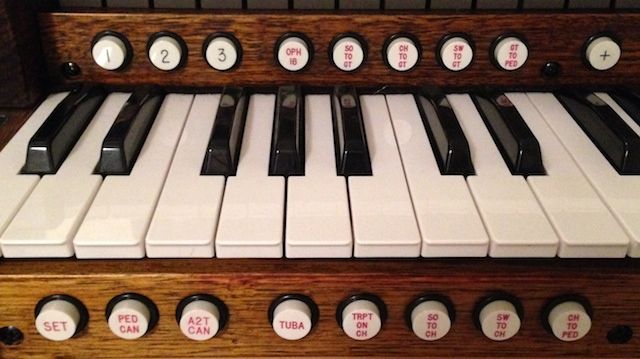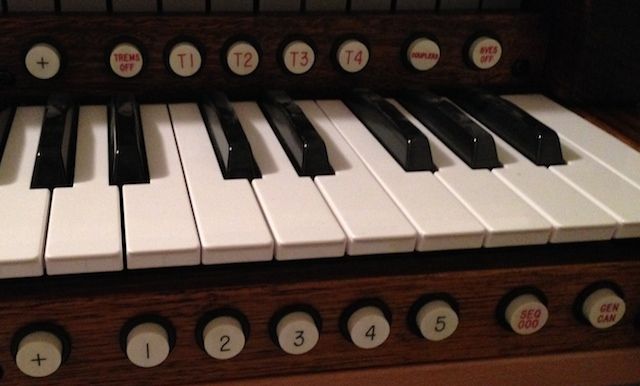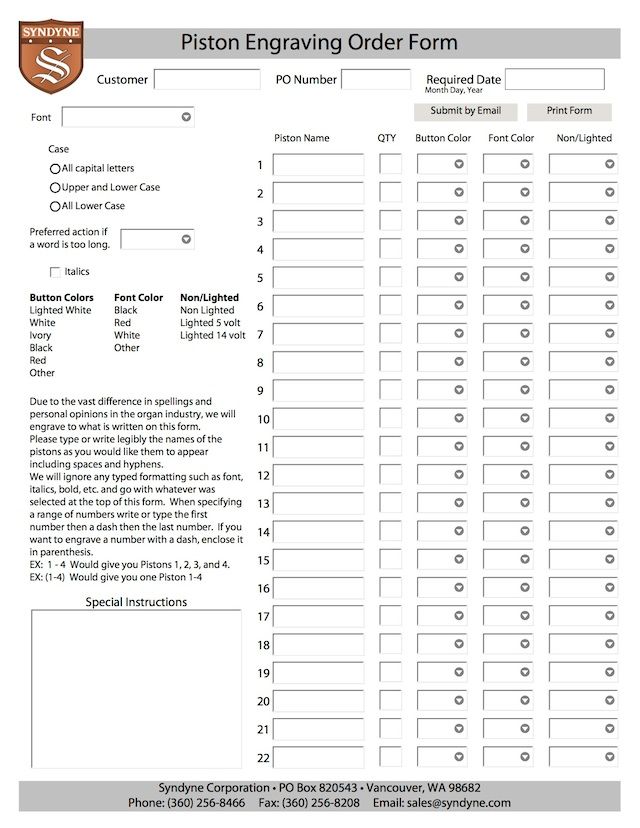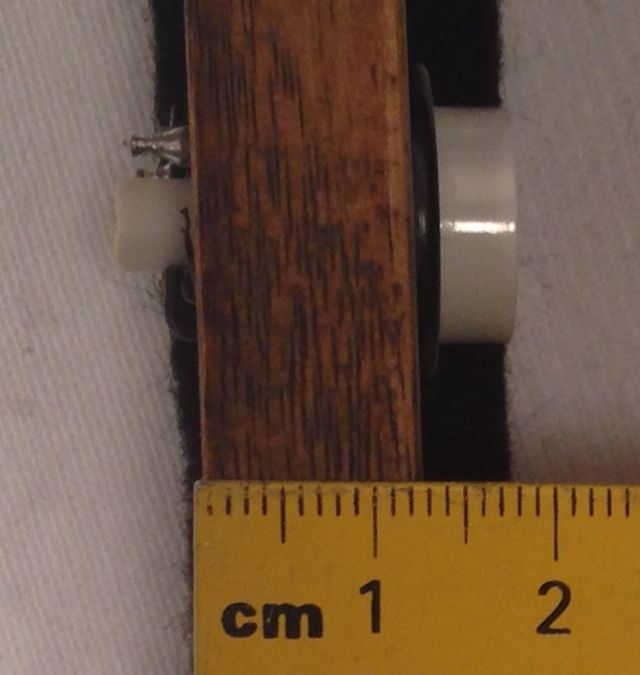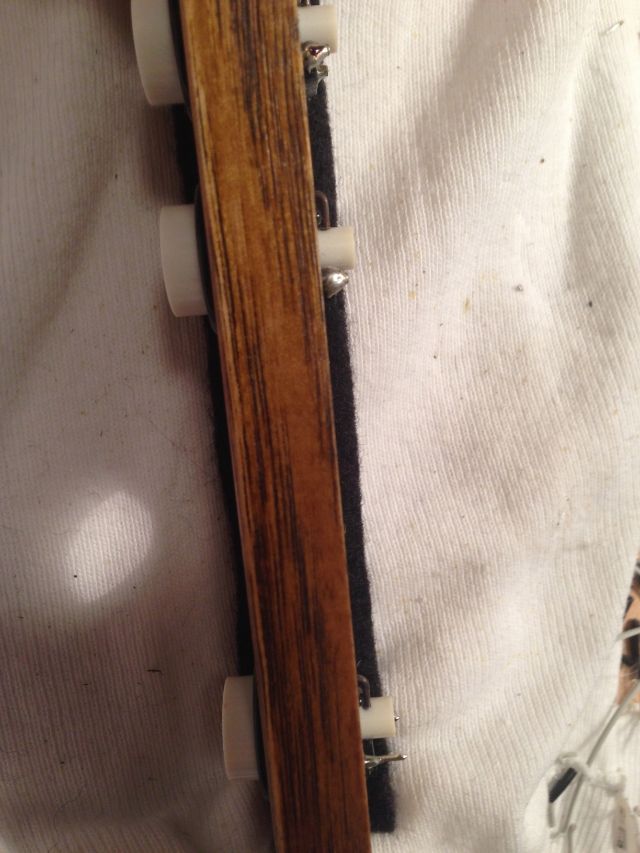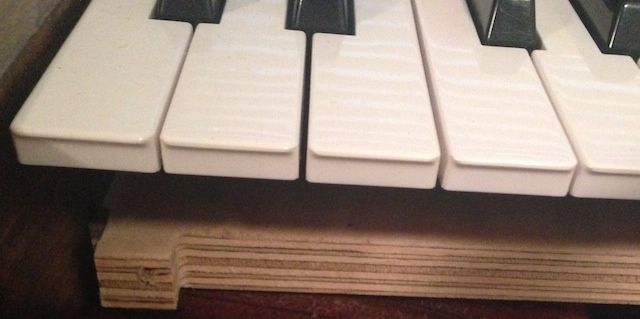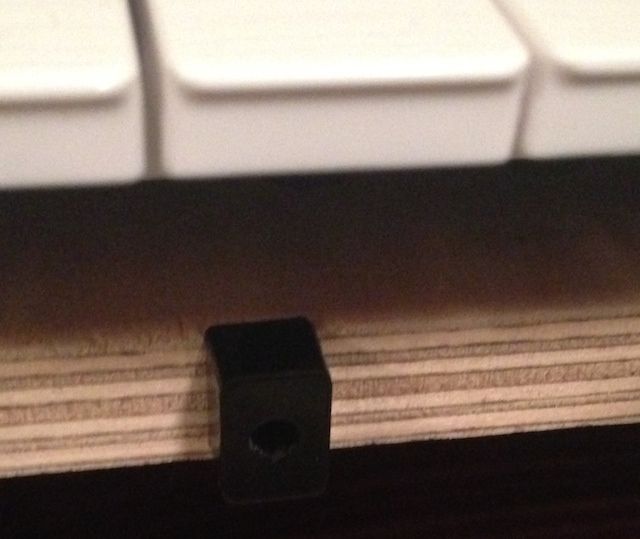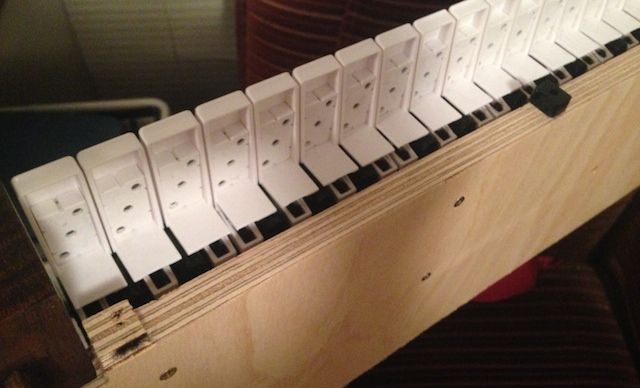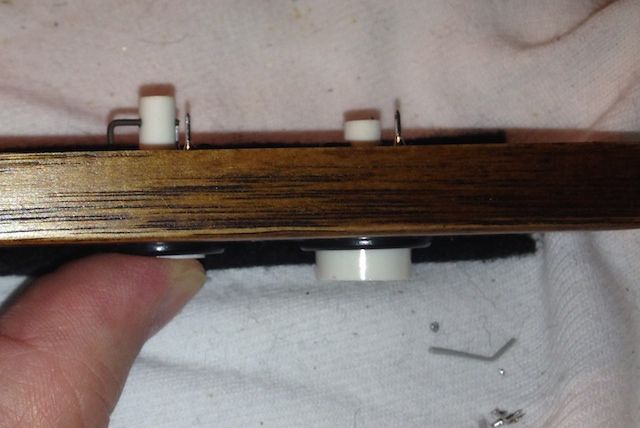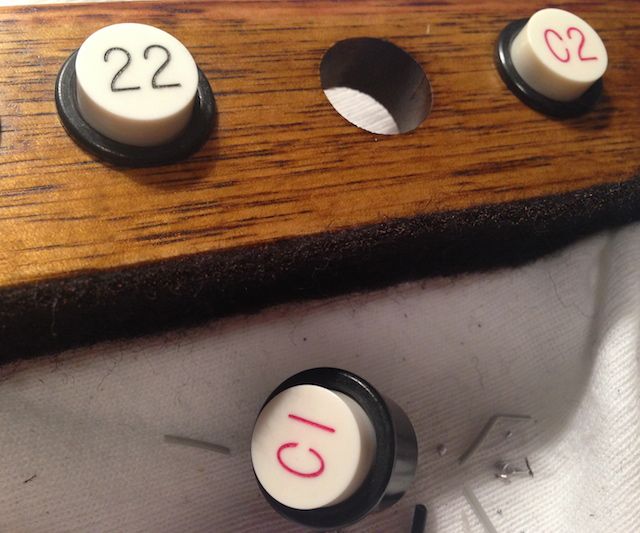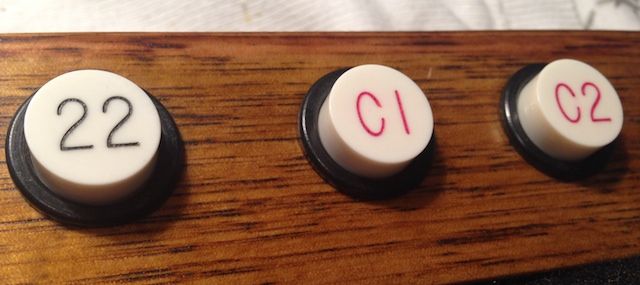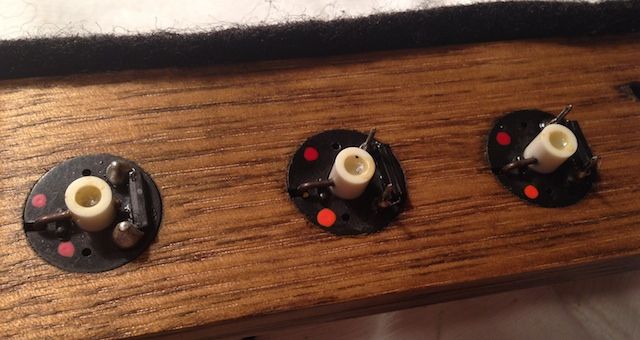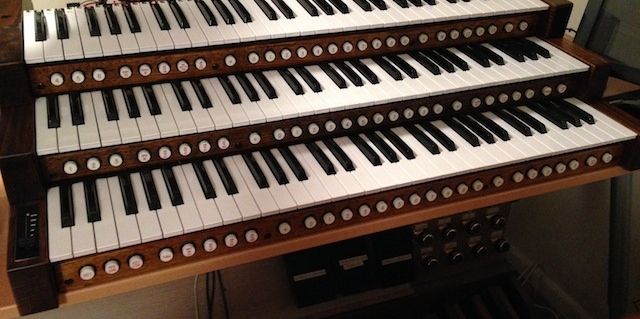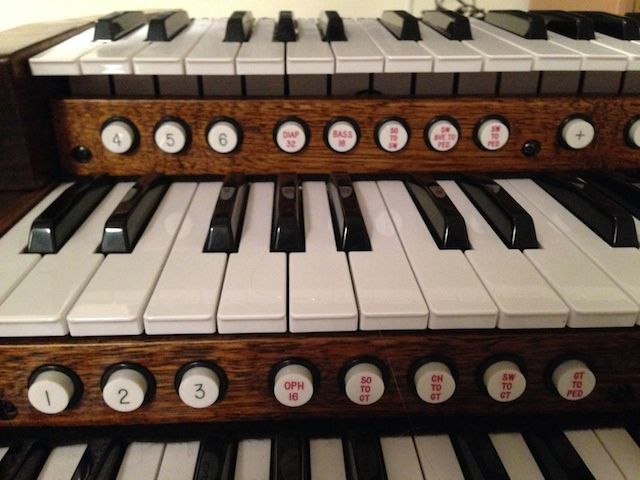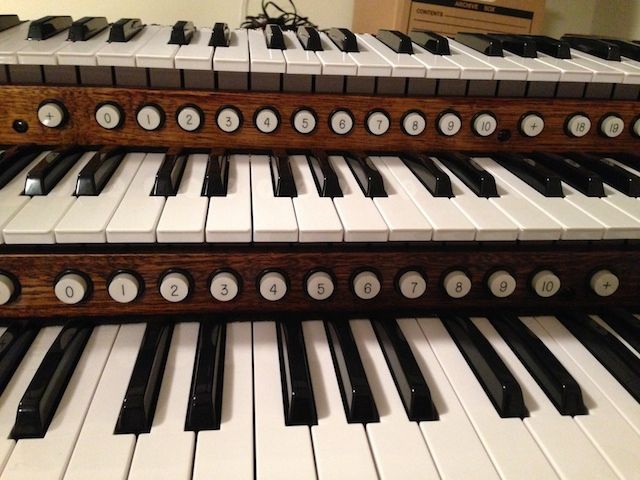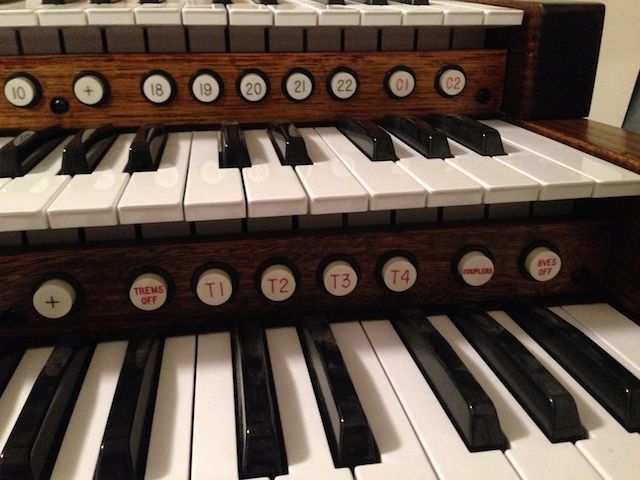Work on the Choir piston rail went faster than I'd anticipated over the last few days. The pistons are now wired and tested, and the keyboard is back in place.
Here's the Choir manual with piston hardware and wiring. The inner electronics of the skinned Behringer UMX-610 can be seen, mounted behind the keys. They serve no purpose other than to stabilise the MIDI output. Initially it was thought that these additional circuit boards for the original Behringer buttons and faders could be left out, but in that state the keyboards generated a vast amount of random MIDI output data.
The E-Keys unit is shown in the place where I'd initially intended it to be - attached behind the keys. Unfortunately I later learned that there's insufficient clearance for the next keyboard to be placed above, so the E-Keys has now been taken off and will be placed free-standing just behind the keyboard. The E-Keys units for the Great and Swell will need to be similarly treated, and this will result in a stack of three. The clearance above the Solo keyboard is much greater so it can stay attached.
Two cables hang loose without connectors. One is to supply part of the fifth piston rail. Four E-Keys units will be used, one for each keyboard, but there are 8 outputs spare on each and these will be used to drive the fifth piston rail. The second loose cable is the very thin red/grey cable. This comes from the Sequencer Plus pistons. All 8 Plus pistons (2 to each keyboard) will be wired in parallel back to a single MIDI input on the Solo piston rail, so that they use just a single Hauptwerk input.
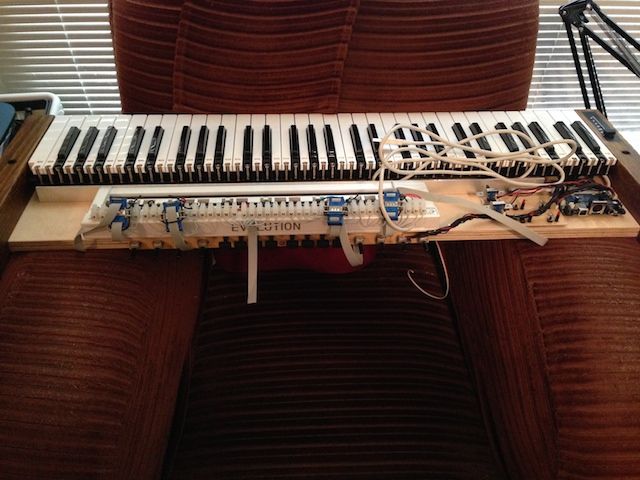
Here's the Choir keyboard with pistons attached, back in place on the Ikea Galant table. The E-Keys unit has yet to be moved back onto the table top.
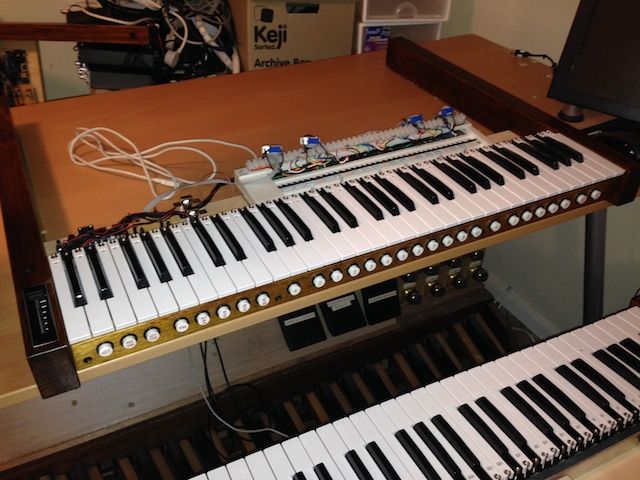
I've done some rearranging of pistons since I published my "final" list a while back. I've had several new pistons engraved.
Here's a shot of the Choir piston rail - left end. The red pistons are for couplers and functions in classical sample sets. Most are self-explanatory, and many are derived from special purpose pistons on larger sample sets including Salisbury, Hereford, Silver Octopus Studio 80 and the PAB. On the Choir piston rail the piston labelled A2T CAN will be a dedicated cancel piston for Accompaniment 2nd Touch stops. For theatre organs the five red function/coupler pistons will be reassigned to give a further five manual combinations, but on the Accomp these five will be set up specifically for 2nd touch stops only using the scoped piston function in Hauptwerk. Having a cancel piston handy will be useful since the keyboards don't have proper second touch contacts - just velocity sensitivity utilised through Hauptwerk for second touch. Since this can be rather tricky to manage I think it will be a good idea to have a quick means of cancelling second touch stops when they are not needed to avoid accidents.
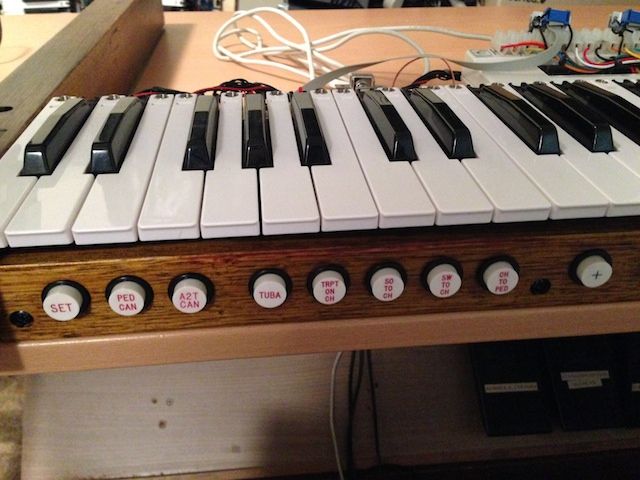
In the middle, flanked by the Sequencer Plus pistons, are 10 departmental pistons plus departmental cancel.

On the far right is another group of 5 pistons, which on this keyboard are numbered 1 to 5. I anticipate using these for separate pedal combinations. The General Cancel is in its expected location, and next to it I've placed a piston for resetting the Sequencer to Frame 000.
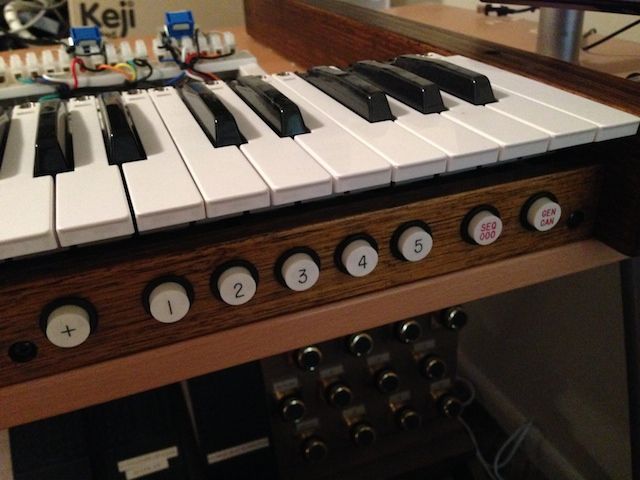
The thumb pistons (and the brass toe studs visible in some shots - installed in August 2010) are from Syndyne. I can't speak highly enough of this company. They have been a delight to deal with. The engraving was done by Syndyne according to my requirements. The cost wasn't prohibitive as it was from other suppliers, otherwise there's no way I'd have gone for 140 pistons. Had I purchased engraved pistons from Kimber Allen in the UK I'd have had to cut my plans back by about 75 per cent for the same outlay. Purchasing in American dollars with Australian dollars is much more favourable, especially since I made the bulk of these piston purchases back when the strong Aussie dollar was above parity with the US dollar.
When I had the keyboard frame constructed for me a year ago by a local organ builder I specified the layout and spacing of the holes and indicated the diameter as stated by Syndyne. The pistons are a perfect fit in these holes, and there's ample space behind the rail to contain the wiring. The cabling is by flat ribbon cables which run in a small gap left for this purpose underneath the keyboard to reach the back.
More shots to come once the Great is back in situ.
Andrew

